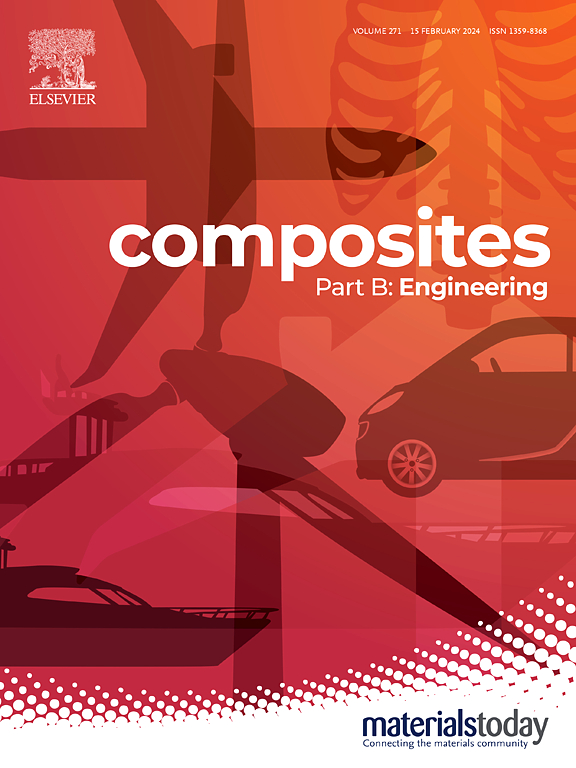Fabrication of organic-inorganic double-walled (ER@EC/SiO2) microcapsules via biomimetic mineralization for self-healing cementitious materials
IF 12.7
1区 材料科学
Q1 ENGINEERING, MULTIDISCIPLINARY
引用次数: 0
Abstract
The performance of self-healing cementitious materials can be enhanced by improving the interfacial transition zone (ITZ) between microcapsules and cementitious materials. Silicon dioxide (SiO2), which serves as the outer wall material of microcapsules, can enhance the ITZ performance and strengthen the cementitious material matrix. In this study, organic-inorganic double-walled microcapsules were synthesized through the biomimetic mineralization method. The core material consisted of epoxy resin (ER), while the inner wall was made of ethyl cellulose (EC). The outer wall was composed of SiO2. The morphology, ζ-potential value, chemical structure, thermal stability, mechanical properties, triggering properties, and self-healing capabilities were characterized. The effect of biomimetic mineralization was confirmed. The results showed that the microcapsules exhibited a regular spherical shape with a rough surface and a distinct inorganic wall structure. The macromolecule inducer polyethyleneimine (PEI) and anionic ethyl cellulose formed a macromolecule-anion complex. The microcapsules showcased triggering properties in simulated pore solutions of cementitious material. Montmorillonite-modified double-walled microcapsules with SiO2 as the outer wall (MDMSiO2) exhibited remarkable self-healing performance, achieving a maximum recovery rate of 94.1 %. The addition of MDMSiO2 to cementitious materials resulted in a significant increase in material strength (31.58 %) after three days. The synergistic effect of biomimetic mineralization and first-principles calculations suggested that this approach can effectively guide the deposition of inorganic substances and reduce their reaction energy barriers, underscoring the potential to enhance the performance of cementitious materials.
求助全文
约1分钟内获得全文
求助全文
来源期刊

Composites Part B: Engineering
工程技术-材料科学:复合
CiteScore
24.40
自引率
11.50%
发文量
784
审稿时长
21 days
期刊介绍:
Composites Part B: Engineering is a journal that publishes impactful research of high quality on composite materials. This research is supported by fundamental mechanics and materials science and engineering approaches. The targeted research can cover a wide range of length scales, ranging from nano to micro and meso, and even to the full product and structure level. The journal specifically focuses on engineering applications that involve high performance composites. These applications can range from low volume and high cost to high volume and low cost composite development.
The main goal of the journal is to provide a platform for the prompt publication of original and high quality research. The emphasis is on design, development, modeling, validation, and manufacturing of engineering details and concepts. The journal welcomes both basic research papers and proposals for review articles. Authors are encouraged to address challenges across various application areas. These areas include, but are not limited to, aerospace, automotive, and other surface transportation. The journal also covers energy-related applications, with a focus on renewable energy. Other application areas include infrastructure, off-shore and maritime projects, health care technology, and recreational products.
 求助内容:
求助内容: 应助结果提醒方式:
应助结果提醒方式:


